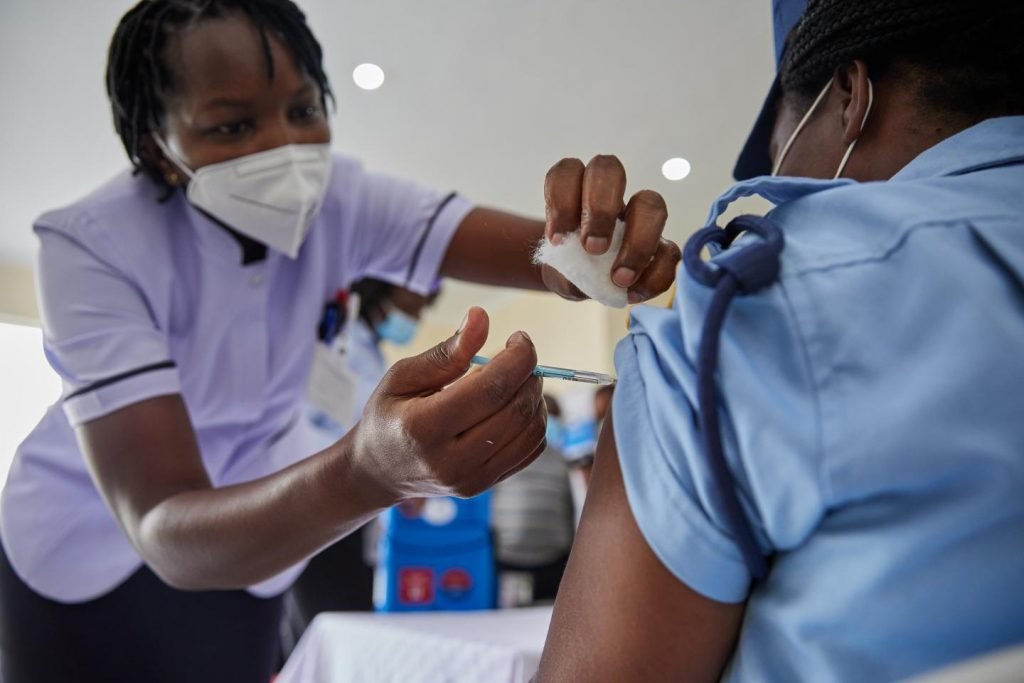BY EDWIN WANJAWA
It is official. The third wave is here. The Government has locked down the five counties of Nairobi, Machakos, Kiambu, Kajiado and Nakuru that bear the highest brunt of the disease in order to flatten the curve and not overwhelm our health facilities.
In addition, we are called to maintain the basic Covid-19 safety protocols of social distancing, masking up and regularly washing hands with soap. However, all these are stop gap measures. To get us out of the woods, we need herd immunity and our best shot at that is to get a significant part of the population vaccinated. We are not doing well on this front though.
Given the level of investment, skill, and good fortune in developing a vaccine, it will be tragic if we fail to curtail the virus because Kenyans refuse to be vaccinated. Despite widespread suffering from Covid-19, credible surveys indicate that the proportion of the Kenyan population willing to be vaccinated is below expectation. This is attributed to various factors including misinformation, lack of awareness, poor communication and conspiracy theories.
So how should we promote vaccination uptake? The data surrounding vaccination are still evolving, and different vaccines may come to market. The likely mixed messages about these products’ safety may exacerbate the challenge of vaccine adoption. Add to this the interaction of attitudes toward the virus and vaccines, and it’s clear that we will need myriad communication strategies to ensure widespread vaccine uptake. The following elements should be considered in a national strategy and reinforced by local public health officials and individual clinicians.
Segment public according to identity barriers. Medicine frequently segments patients by demographic or socioeconomic traits, but a striking aspect of the public response to the pandemic has been the association of anti-Covid efforts with personal identity. Some groups have incorporated masks into their self-image as a symbol of community responsibility and respect, while others see wearing masks as a sign of weakness or cowardice. We must be careful not to inadvertently reinforce the identity drivers behind mask wearing; for example, labeling vaccine-hesitant people as “conservative” or “Covid-hoaxers.
Find a common enemy. Uniting two polarized groups often depends on finding a third, more hated common enemy that can be used to build community across differences. The obvious common enemy here is the virus, but demonizing it will work only if both groups see it as real and dangerous. Currently, some groups view the virus threat as inflated or a hoax. For now, appropriate common enemies may be downstream effects: we can focus on “battling” poverty by getting people back to work.
Use analogy. Analogies used in communication harness understanding of some familiar concept to elucidate a complex new concept. Many attitudes toward the pandemic are responses to complex medical information being communicated at a troubled time. Analogies can communicate rich information in a single image or phrase. For example, “the war against Covid” may connote coming together, making sacrifices, doing tough things, and emerging on the other side with new improvements and inventions in hand.
Leverage natural scarcity. In consumer markets, scarcity often signals exclusivity and prompts greater interest or desirability. Because of a natural attentiveness to negative outcomes, we’re attuned to goods that might run out or opportunities we might miss. Although it would be wrong to create an artificial scarcity of vaccines to boost the attractiveness of securing one, we should not ignore natural scarcity’s effect on attitudes toward vaccines as they’re rolled out. We should frame early access to vaccines as a mark of honor or respect for people we want to protect.
Predict and address negative attributions. Attribution theory explores how people confronted with something unexpected or troublesome develop explanations for it. For new products, consumers’ attributions can help or hurt adoption. The need for trust and transparency demands that vaccine promoters do not fabricate positive attributions. But given attributions’ power, effective promotion will involve predicting negative attributions and combating them directly, which requires listening openly to the vaccine-hesitant, building trust, and addressing false attributions directly and consistently. There is also a clear need to work with social media platforms to limit dissemination of false information.
Avoid conveying piecemeal risk information. One challenge for the pandemic response is the slow release of information about the scientific milestones in vaccine development. Although this information flow is a well-intentioned effort to improve transparency for the scientific community, it could backfire with the public. Again, consider how our evolving knowledge of the benefits of masks has sown confusion when it appears that experts are not clear on the issue. Though the efficacy and safety of Covid-19 vaccines are highly newsworthy, policymakers should recognize that negative trends that “trickle out” could disproportionately influence the public. Vaccine news cannot be covered up, but it can be presented in total, rather than with incremental updates.
Promote compromise options. In medicine, patients are often offered only two choices — to get or not get some recommended treatment. But the compromise effect suggests that we can nudge people to a desired choice and increase their confidence about it by making it the compromise option. To make vaccination decisions a three-option rather than two-option choice, we could allow people to get the shot now, sign up for a later date, or not get it at all. The key is to avoid depicting vaccination as the most extreme action in a range of choices.
The development of Covid-19 vaccines is an amazing scientific achievement. Adoption of vaccines by the Kenyan public will require a similar level of achievement. Vaccine promotion demands a multifaceted behavioral approach if it is to succeed.
Edwin Wanjawa teaches in the School of Humanities and Social Sciences, Pwani University


